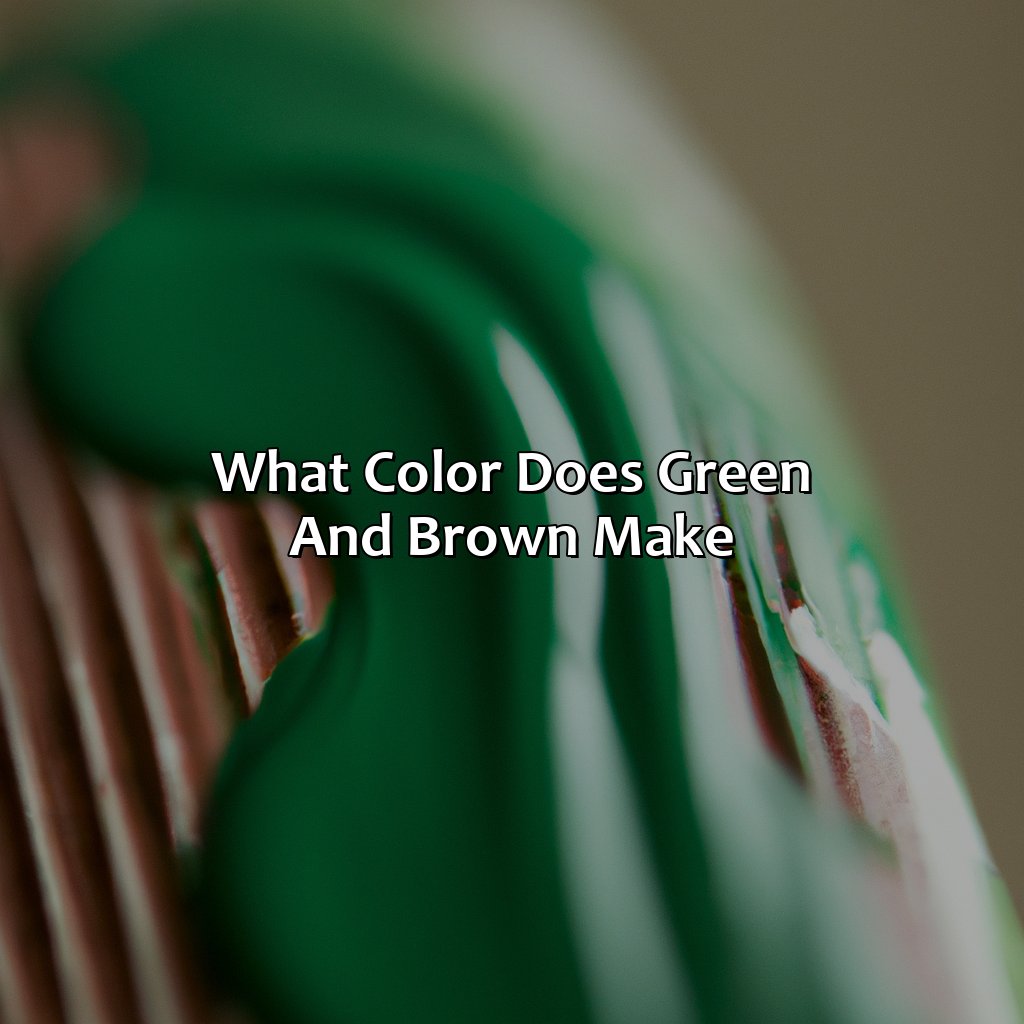Key Takeaway:
- Terracotta is a type of clay material that comes in a range of colors, including natural and glaze colors, with one of the most common colors being a warm orange-brown hue that is often referred to as terracotta color.
- The color of terracotta is influenced by a range of factors, including the type of clay used, the firing temperature, and the use of glazes and oxides.
- Terracotta’s natural color palette includes red and brown hues. Terracotta can also be coated with glazes and oxides to achieve a range of colors such as blues and greens, and these colors can be combined with terracotta to form striking color combinations.
Key Takeaway:
- Terracotta is a versatile material that is known for its durability and weather resistance.
- Terracotta can be used in a variety of applications, from tiles and bricks in architecture to pottery and sculptures.
- The warm, natural hues of terracotta make it a popular choice for both interior and exterior design, particularly when paired with other natural materials and colors.
Key Takeaway:
- Terracotta has a rich history and has been used for thousands of years, from ancient terracotta artifacts to modern-day pottery and architecture.
- The texture, color, and strength of terracotta can vary depending on the raw materials used and the production process.
- Understanding the different colors of terracotta, and how they are achieved, can help you choose the best terracotta for your project or design scheme.
What is Terracotta?
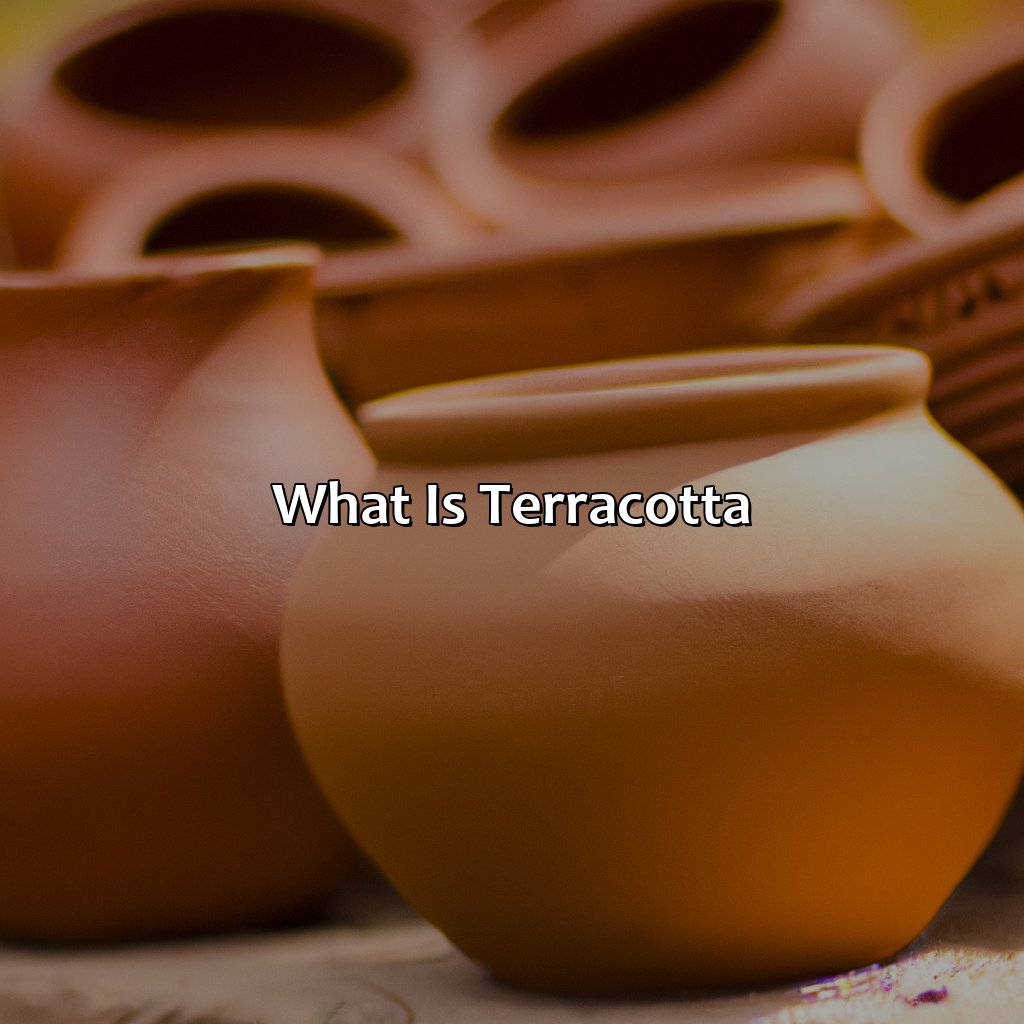
Photo Credits: colorscombo.com by Gregory Young
What is terracotta? Dive into this solution to find out! Look at the two sub-sections – definition and history.
Terracotta refers to a type of earthenware that is fired at low temperatures. It is usually brownish-red in color and has a slightly porous texture. It is often used for making sculptures, pottery, and decorative items.
Terracotta has been used for thousands of years. In fact, ancient terracotta artifacts have been discovered in various parts of the world, including China, India, and Greece. The material was a popular choice for sculpture and pottery because it was relatively easy to work with and could be molded into a variety of shapes. In addition to its functional uses, terracotta has also played an important role in architecture, particularly during the Renaissance period in Europe. The material was used for everything from roof tiles to decorative friezes and facades.
Uncover the mysteries of ancient terracotta artifacts!
Definition of Terracotta
Terracotta, a type of clay-based unglazed ceramic, has its origin from the Italian words ‘terra cotta,’ which means ‘baked earth.’ This unique material is a result of baking molded earthenware in high temperatures to achieve high durability and strength. The color and texture of Terracotta can be manipulated by adding different oxides and glazes during the production process. Terracotta has been used for various purposes, ranging from architecture to pottery making. It dates back to ancient Chinese, Indian, Greek and Roman civilizations where it was used for building structures that still stand erect today.
Different regions across the world use distinctive variations of Terracotta based on their geographic location and available resources. The primary difference is in the raw materials used in production. Fine-textured clays are often mixed with sand or other coarse particles to provide enough elasticity for shaping without cracking or losing form during drying. Terracotta wares produced using specific clay may give off different colors depending on the amount of iron present in the material.
When exposed to firing temperatures, Clay bodies typically transform from its natural color into deep oranges and reds that vary over a broad range. Natural terracotta colors can come out when different mixes of iron oxide are added during production; this can create yellow-orange hues or even dark brown shades. Regardless, Terracotta’s use provides a sense of warmth that brings life and beauty into any setting.
Terracotta’s versatility in construction or decorative potters ware allows it to be utilized for numerous purposes. From Tiling rooftops, paving exteriors walls to creating pottery souvenirs, this brick-red ceramic truly is exceptional. It has become widely popular across the globe due to its aesthetic appeal yet practicality and usefulness as one among the preferred traditional building materials owing to its resistance against weathering agents like freezing temperatures, water damage among others.
History indicates how widespread terracotta has been utilized in construction throughout history. India’s famous Red Fort, built by Mughal emperor Shah Jahan, is an excellent example of the use of terracotta as a durable and cost-effective building material. Not only did it serve a utilitarian purpose, but its elaborate designs and engravements were also used to showcase beauty and luxury. Hence, Terracotta meaning ‘baked earth’ has become the broadest spectrum of the architectural space today.
Terracotta artifacts prove that even ancient civilizations knew pottery was worth firing up.
Terracotta in History
Terracotta has been a part of human civilization for centuries. Its history can be traced back to the ancient civilizations of Greece, Rome, and China, where it was widely used to create pottery and sculptures. The use of terracotta in ancient times reflects its versatility, durability, and aesthetic value.
The popularity of terracotta artifacts is not just confined to ancient times as today it has gained immense recognition in modern-day architecture. Ancient terracotta still inspires many architects, designers and artists across the globe due to its timeless and elegant appeal.
Nowadays it is used in the making of brick walls, flooring tiles as well as in roofing tiles. It was also used for creating decorative figures or ornaments representing ancient beliefs and stories.
Incorporated into modern-day architecture designs has allowed terracotta buildings to showcase a rich character that complements the architectural style while adding warmth and depth.
One interesting fact is that Terracotta sculptures have revolutionized art since 500 BC; they are regarded as one of the first steps towards shaping our understanding of art’s place in society.
Terracotta is as strong and durable as your grandma’s knitting skills, with a texture that’s rougher than a cat’s tongue.
Characteristics of Terracotta
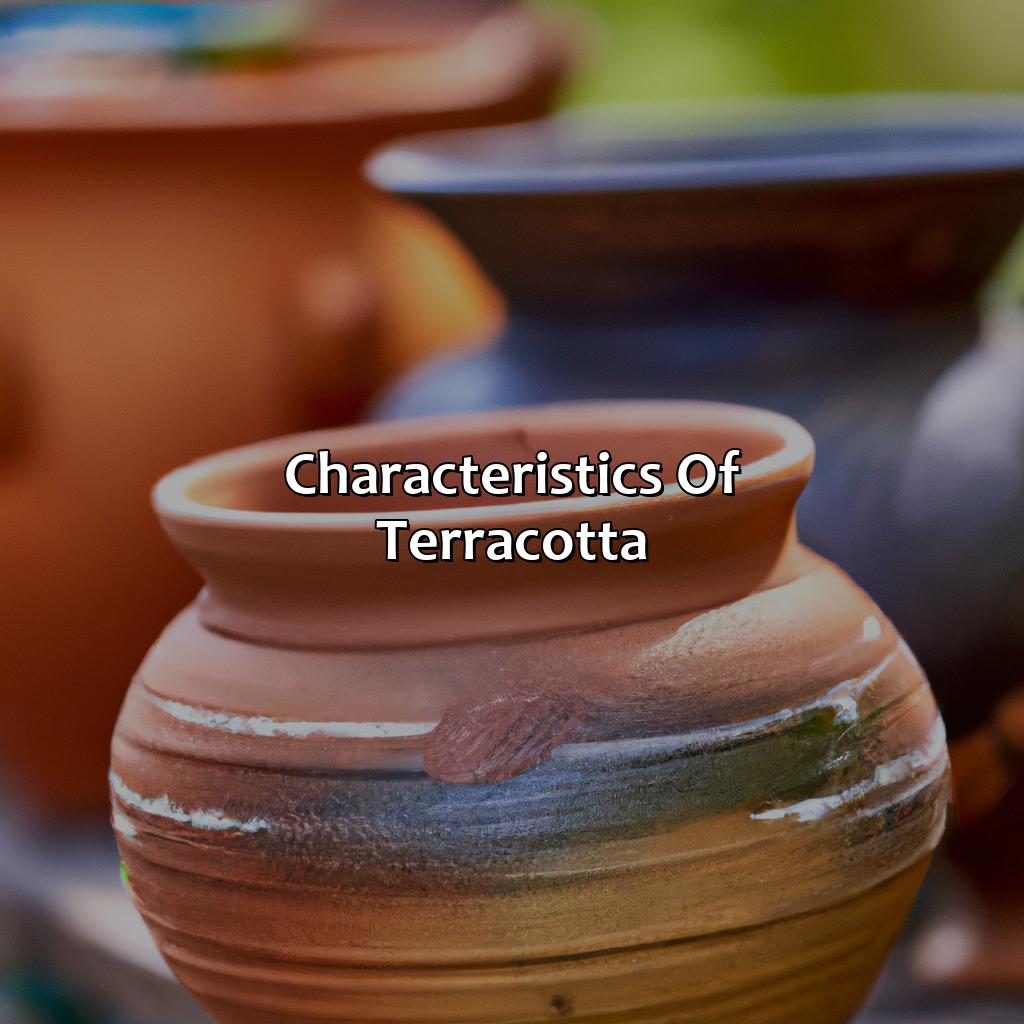
Photo Credits: colorscombo.com by Bryan Clark
Terracotta’s characteristics are unique. Let’s investigate. Texture can be rough or smooth. It is weather-resistant and strong. Plus, there are many colors to choose from. Natural or glazed. The classic terracotta color is a signature.
Texture of Terracotta
Terracotta possesses a unique texture, which contributes to its appeal in architecture and pottery. The texture of terracotta varies based on the production method and can be either rough or smooth. The rough texture offers a distinct natural appearance, while the smooth texture lends itself to sleek and modern designs.
The surface consistency of terracotta ultimately depends on how it’s mixed, shaped, and fired. If mixed with more sand than clay, the result is a rougher texture with visible grains, making it suitable for rustic-looking pottery creations. In contrast, if mixed with finer materials such as recycled glass or porcelain scraps, the outcome will have a smoother finish.
Moreover, adding pigments and glazes to the terracotta can enhance its textural appearance. Glazes applied over rough-textured terracotta reveal details of the tiny bumps in its surface. Glazes highlight the delicate variations produced during firing when applied over smooth-textured terracotta.
In ancient Greece’s Choragic Monument of Lysicrates in Athens boasted Corinthian columns capped with acanthus leaf capitals that were cast in thick terra cotta. They possessed an exquisite detail not achievable through any other building material at that time.
The texture plays a significant role in the look and feel of Terracotta objects. It adds character and depth while emphasizing every nook and cranny by molding them into its structure.
Terracotta: the weather-resistant and strong material that even Mother Nature can’t crack.
Durability and Strength
Terracotta’s resilience and sturdiness makes it a highly sought-after material. This natural clay-based product has proven to be weather-resistant and long-lasting, making it ideal for various applications.
A table is an excellent way to demonstrate the durability and strength of Terracotta. The column on the left should cover its features while the column on the right should list their corresponding benefits. For instance, Terracotta’s textured surface helps prevent slippage in wet areas like bathrooms or outdoor walkways, making it an ideal option for safety flooring.
Unique details about Terracotta include its antistatic properties, which make it resistant to dust and other particles that accumulate on surfaces over time. So if hygiene is a priority, Terracotta will remain pristine for much longer than other materials.
Pro Tip: To further enhance Terracotta’s longevity, apply a sealant to protect against moisture infiltration and prevent stains from soaking in.
Terracotta colors range from earthy naturals to vibrant glazes, creating a versatile and beautiful color palette.
Color of Terracotta
Terracotta is known for its natural colors and warm tones that evoke a sense of earthiness. Its color depends on various factors such as the type of clay used, temperature, and firing duration. Terracotta colors range from yellowish-orange to reddish-brown, with some variations in between. It’s essential to keep in mind that unlike other materials, terracotta doesn’t have a single defined color.
The texture of terracotta can also affect its color as it might influence the way light reflects off the surface. Durability and strength are additional factors that contribute to the color preservation of terracotta pieces over time. Natural colors are often preferred when it comes to architectural designs like flooring and wall tiling because they blend well with other building materials and nature.
Terracotta’s color palette can also be expanded using glazes and oxides which produce different hue variations on the clay surface. The application process of glaze or oxide mixture may result in unique patterns, gradients or textures to give each piece its own characteristic style. For instance, cobalt oxide creates deep blue shades on terracotta tiles while copper oxide complements the earth tones by producing greenish hues.
Finally, popular terracotta color combinations involve coordinating across natural and glaze colors for more dynamic design options. For example, pairing natural terra cotta flooring with terra cotta red walls can create an inviting atmosphere in any space. This limited but colorful palette of natural hues and glaze iterations makes it easy to create vast design possibilities when designing with this material.
Historically speaking, using terracotta as a building material dates back centuries ago as it was revered even by ancient civilizations for its striking aesthetic value both aesthetically and functionally. Its organic origin makes it renewable which has led people to incorporate this naturally occurring material into their daily lives for millennia.
If you want to make terracotta, you gotta get your hands dirty with some clay and a whole lotta heat.
How is Terracotta Made?
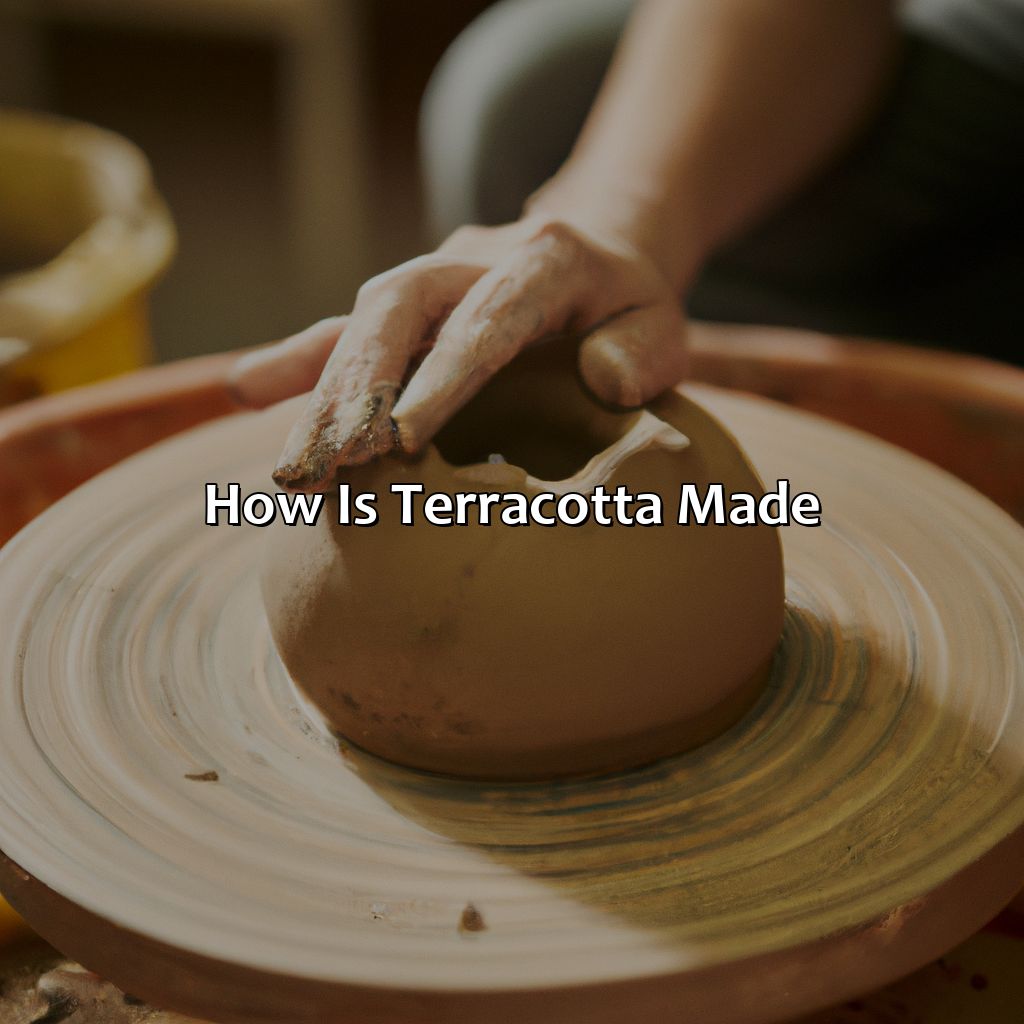
Photo Credits: colorscombo.com by Jeffrey Sanchez
We’ll take a look into the process of making Terracotta. It has two sub-sections:
- The first one is about raw materials, like the clay and additives used.
- The second one is about the production process. It includes firing and drying to create the finished product.
Raw Materials Used in Terracotta Production
Terracotta, which is a type of clay material, requires several raw materials to produce quality products. A variety of additives must be used for making terracotta with unique characteristics that cater to specific purposes.
The table below lists the essential materials needed in terracotta production.
| Raw Materials | Purpose |
|---|---|
| Clay | Primary ingredient used to form the base material of terracotta products. |
| Sand | Provides texture and adds stability to the clay material. |
| Water | Used as a binding agent to mix and bind other materials together. |
| Fiber | Reinforces the structure of terracotta products and prevents cracking during firing. |
In addition to these primary ingredients, various other minerals such as talc, feldspar, and kaolin can be added in small amounts depending on the desired outcome.
Producers can alter proportions of these additives to maximize or minimize certain properties of the end product. For example, altering the amount of fiber added can increase structural integrity. This flexibility allows for customization and tailored final products.
Pro Tip: Terracotta producers should aim for using high-quality raw materials when producing their products to ensure their longevity and strengthen the material’s natural beauty.
From soft clay to hardened masterpiece, the process of making terracotta involves both fire and patience.
The Process of Making Terracotta
The production of Terracotta involves several steps that must be followed with precision to achieve the desired outcome. Here’s a brief guide on how Terracotta is made:
- Mixing raw materials – A mixture of clay, sand, and other additives is blended together in precise quantities.
- Molding – The blended mixture is formed into shapes using different techniques such as hand molding or a press mold. At this stage, the greenware (unfinished pottery) is then left to dry.
- Drying – The greenware must dry thoroughly before firing to avoid cracking or shattering.
- Firing – The now dried greenware goes through a firing process at high temperatures to remove all moisture and transforming them into sturdy and durable pottery.
- Glazing – After firing, some terracotta pieces may be glazed for an aesthetic finish.
One important aspect of producing Terracotta is controlling both the drying and firing processes because they determine its final durability, strength, and color.
Pro Tip: To achieve the best results when making Terracotta, it is recommended to keep a close eye on how long it dries and the temperature during the firing process. Terracotta comes in more shades than a chameleon at a paint store.
Different Terracotta Colors
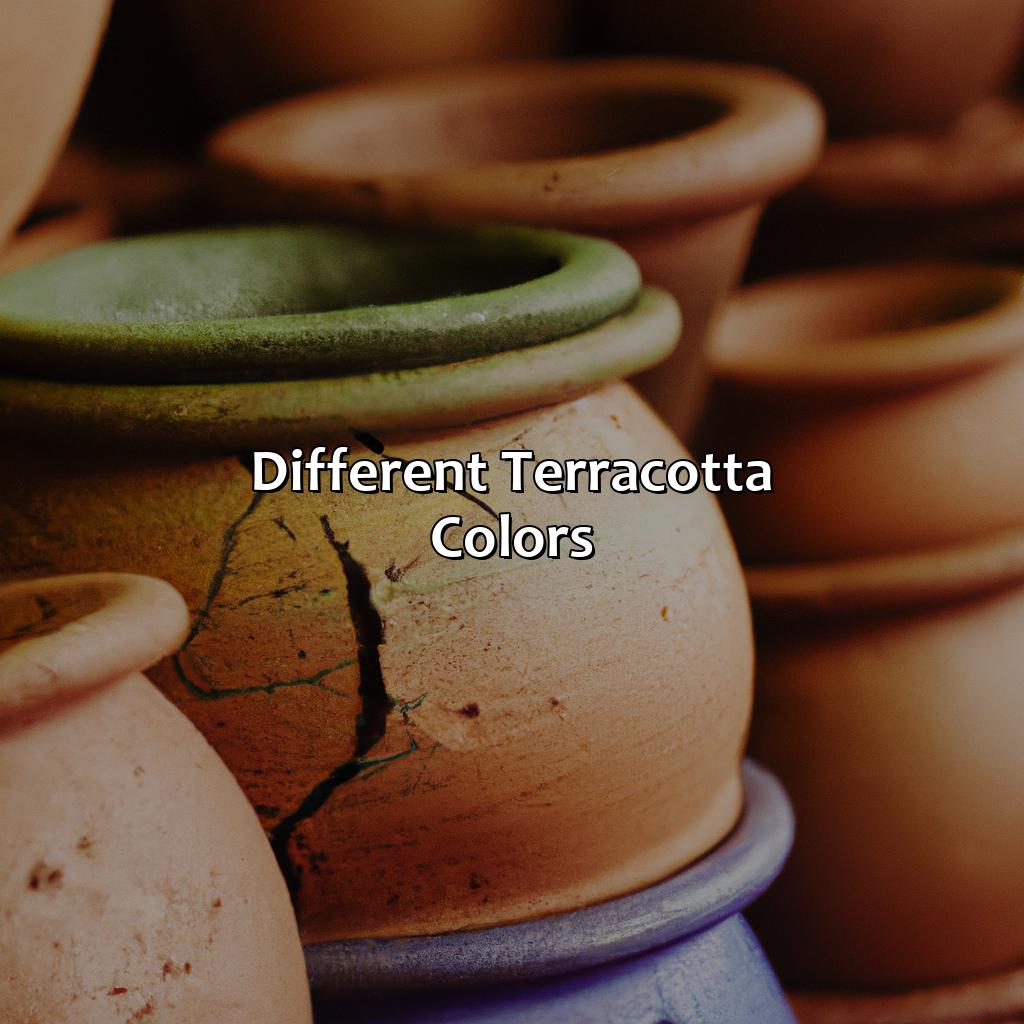
Photo Credits: colorscombo.com by Joe Mitchell
You gotta know the different types of terracotta hues to discover the world of color. Natural, glaze, oxide, and combinations are available. They all suit different artsy expressions. Let’s explore each one in-depth!
Natural Terracotta Colors
Terracotta is a natural material that comes in different colors. The earthy tones of red and brown are among the most popular natural terracotta colors. These colors occur due to the presence of iron oxides in the clay mixture used to make terracotta. The variation in color depends on the concentration of iron oxide present in the soil. Terracotta made from more or less iron-rich clay produces different shades, resulting in various hues of red and brown.
These natural terracotta colors have been utilized for centuries, beginning with ancient civilizations such as the Greeks and Romans. Natural untreated terracotta continues to be attractive to modern architects because it provides a timeless look that blends seamlessly with its surroundings while making an impression of archaeological value.
Interestingly, each region’s geology changes subtly, resulting in slightly different hues even within colors traditionally thought of as uniform. Some distinguishable variations include pinkish-red or dark burnt sienna shades found predominantly across Latin America and Southern Spain.
A fact worth noting is that much like a fingerprint, every piece of terracotta is unique due to variations caused by geological factors local to where its particular clay was sourced from. Terracotta colors can be transformed through the magic of glazes and oxides, giving your creations a touch of ancient elegance.
Terracotta Colors Achieved through Glazes and Oxides
Terracotta possesses an inherent warm and earthy color but can be notably transformed using glaze colors and oxide colors. These add a layer of uniqueness, depth, and variety to the material.
Here’s a table that showcases how different oxide colors and glaze colors can affect the final Terracotta:
| Oxides | Colors |
|---|---|
| Copper | Green or red |
| Iron | Yellow, orange, brown, or red |
| Cobalt | Blue |
| Chromium | Green |
In addition to these popular glaze colors and oxide colors combinations, other unique blends can also be achieved by mixing different oxides with glaze according to desired results.
Terracotta is not just aesthetically pleasing but has superior insulation properties, making it an ideal choice for walls and roofs. It is also commonly used for pottery creation as well as sculptural art pieces.
Don’t miss out on the opportunity to elevate your designs using various glaze and oxide color combinations in your Terracotta creations! With terracotta and blue, you’ll feel like you’re bringing the Mediterranean into your space, while terracotta and green will transport you to a lush, tropical paradise.
Here’s another table that shows the impact of different glaze colors on Terracotta:
| Glazes | Colors |
|---|---|
| Clear | Glossy, clear |
| Matte | Non-reflective surface |
| Opalescent | Translucent with a variety of colors |
Popular Terracotta Color Combinations
Terracotta Hue Combinations
Terracotta is a versatile pigment that pairs well with various hues, including blues and greens. Its warm undertones make it perfect for earth-inspired color schemes. Here are some popular Terracotta Hue Combinations to consider:
- Terracotta and Blue
- Terracotta and Green
- Terracotta and White
- Terracotta and Mustard Yellow
- Terracotta and Grey
These combinations create a harmonious blend of natural tones that complement each other perfectly. They work well in both interior design and fashion.
Pairing terracotta with blue creates an aesthetic of nautical charm. From deep-sea blues to oceanic teals, these colors blend effortlessly together.
When paired with green, the warm tone of terracotta adds depth and richness to the green palette. From rich forest greens to mossy hues, they create a sense of natural tranquility.
Unique details not covered: Some other popular tints that combine beautifully with terracotta include soft pastels like blush pink or lavender. These give a slight touch of whimsy to the color scheme while still maintaining its natural aura.
Suggestions: For a modern look, experiment with bold prints or geometric patterns incorporating the chosen hues, such as striped throw pillows or patterned area rugs. Alternatively, choose a dominant shade, either terracotta or one of its pairings, as a focal point against simple white backdrops for an elegant aesthetic.
Terracotta: the building blocks of architecture, the canvas for pottery, and the medium for sculptures.
Uses of Terracotta
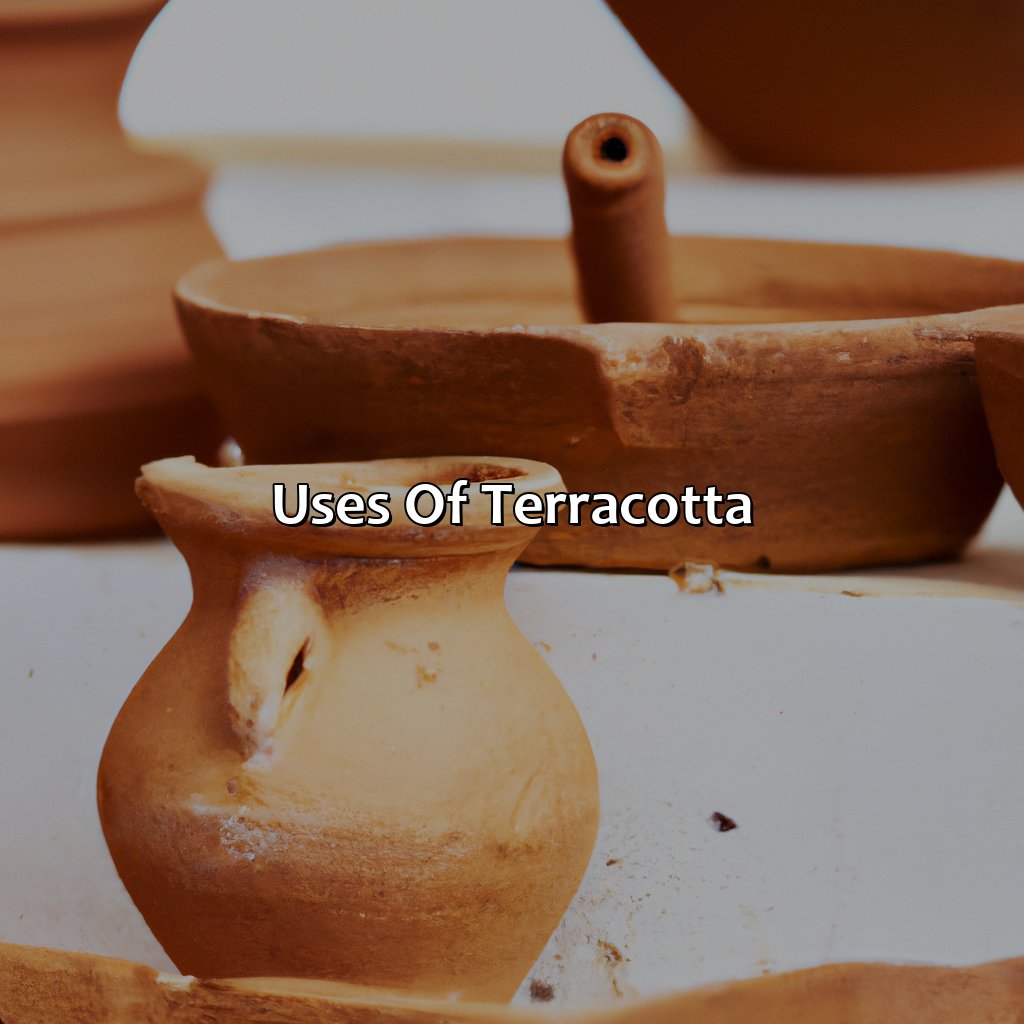
Photo Credits: colorscombo.com by Joshua Lee
Discover the many uses of terracotta! We have included a section all about it, which looks at its applications in Architecture, Pottery and Ceramics, as well as Sculptures. Each sub-section takes a closer look at terracotta’s usage in each area. This includes terracotta tiles and bricks in architecture, pottery and vases in ceramics, plus intricate terracotta figurines and statues in sculptures.
Architecture
Terracotta in Building Design
Terracotta is a material that has been used for centuries in many architectural styles to create long-lasting and visually appealing structures. The versatility of Terracotta tiles and bricks makes them a popular choice for architects who want to combine strength, durability, and aesthetics.
Building designers use terracotta tiles as roofing material instead of traditional shingles or metal panels because they are resistant to weather elements such as hail, high winds, and UV rays. Additionally, terracotta tiles have good insulation properties that can help reduce energy bills by keeping buildings warm in cold weather.
Moreover, the decorative possibilities of Terracotta give architects freedom to create intricate ornamental designs. They mimic stone or clay work with minimal maintenance because they are easy to clean and keep looking new.
In building design today, the use of terracotta is still ever-growing owing to its multiplicity. Having demonstrated Terracotta’s structural advantages so far imply missing out on using it could be costly with no apparent reason nor enough excuse.
Terracotta pottery and vases add a touch of rustic charm to any home decor, or a potential weapon during a zombie apocalypse.
Pottery and Ceramics
Pottery and ceramics have been an essential part of human creativity for centuries. Crafted from various materials, shapes, and sizes, they serve multiple purposes beyond function. Below is a table demonstrating the uses of terracotta pottery in different cultures.
| Culture | Use of Terracotta Pottery |
|---|---|
| Mexican | Terracotta vases used for transportation and storage of water |
| Indian | Terracotta urns utilized for burial rituals |
| Greek | Terracotta pots employed for planting |
| Chinese | Terracotta figurines created as tomb guardians |
Moreover, terracotta pottery has stood the test of time and continues to be a popular choice for pottery enthusiasts worldwide. Fun fact: According to a study by The Telegraph, the largest terracotta army in history was discovered in China’s Xi’an city in 1974. Terracotta figurines and statues – giving your garden that eerie, abandoned vibe since ancient times.
Sculptures
Terracotta sculptures can embody a rawness and authenticity that other mediums cannot replicate. The natural color of terracotta enhances the organic feel of these pieces, making them a popular choice for outdoor installations. Additionally, the durability and strength of terracotta make it a suitable material for sculptures that withstand varying weather conditions.
One interesting feature of terracotta sculptures is that they can also be glazed or painted to achieve different color effects. Certain glazes or oxides can give the terracotta a glossy finish or highlight specific areas of the piece. Different colors combinations can also produce unique visual aesthetics.
Don’t miss out on owning a piece of history through terracotta figurines or statues. Explore the rich culture and tradition associated with this timeless medium and add depth to your art collection today.
Five Facts About What Color Is Terracotta:
- ✅ Terracotta is a reddish-brown color with orange undertones. (Source: Colorhexa)
- ✅ The word “terracotta” comes from the Italian words “terra” meaning earth and “cotta” meaning baked. (Source: Merriam-Webster)
- ✅ Terracotta is often used in pottery and architectural elements like tiles and roofing. (Source: The Spruce)
- ✅ Terracotta has been used since ancient times, with artifacts dating back to 3000 BCE. (Source: Ancient History Encyclopedia)
- ✅ Terracotta can vary in color depending on the region it comes from and the method of production. (Source: Replicata)
FAQs about What Color Is Terracotta
What color is terracotta?
Terracotta is a warm, earthy color that resembles the color of clay or unglazed pottery. It can range from pale pink to deep burnt orange or reddish-brown.
Is terracotta a natural color?
Yes, terracotta is a natural color that comes from the earth and is commonly associated with clay and pottery. It is often used in art, architecture, and interior design.
Can terracotta be used for interior decoration?
Yes, terracotta is a popular choice for interior decoration, especially in the form of tiles, pottery, and accent pieces. It can add warmth and a rustic charm to any space.
What colors complement terracotta?
Colors that complement terracotta include warm shades like beige, cream, and brown, as well as earthy greens and blues. Metallic accents like copper and brass can also pair well with terracotta.
What cultures use terracotta in their art and architecture?
Terracotta has been used in art and architecture by many cultures throughout history, including ancient Greeks, Romans, and Egyptians. It is also a prominent feature in the architecture of many countries in the Mediterranean region.
Can terracotta fade or change color over time?
Yes, terracotta can fade or change color over time due to exposure to sunlight and weathering. To prevent this, it is important to properly seal and maintain any terracotta surfaces in your home.


